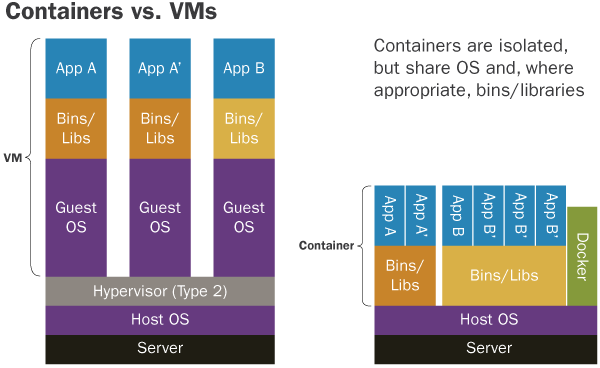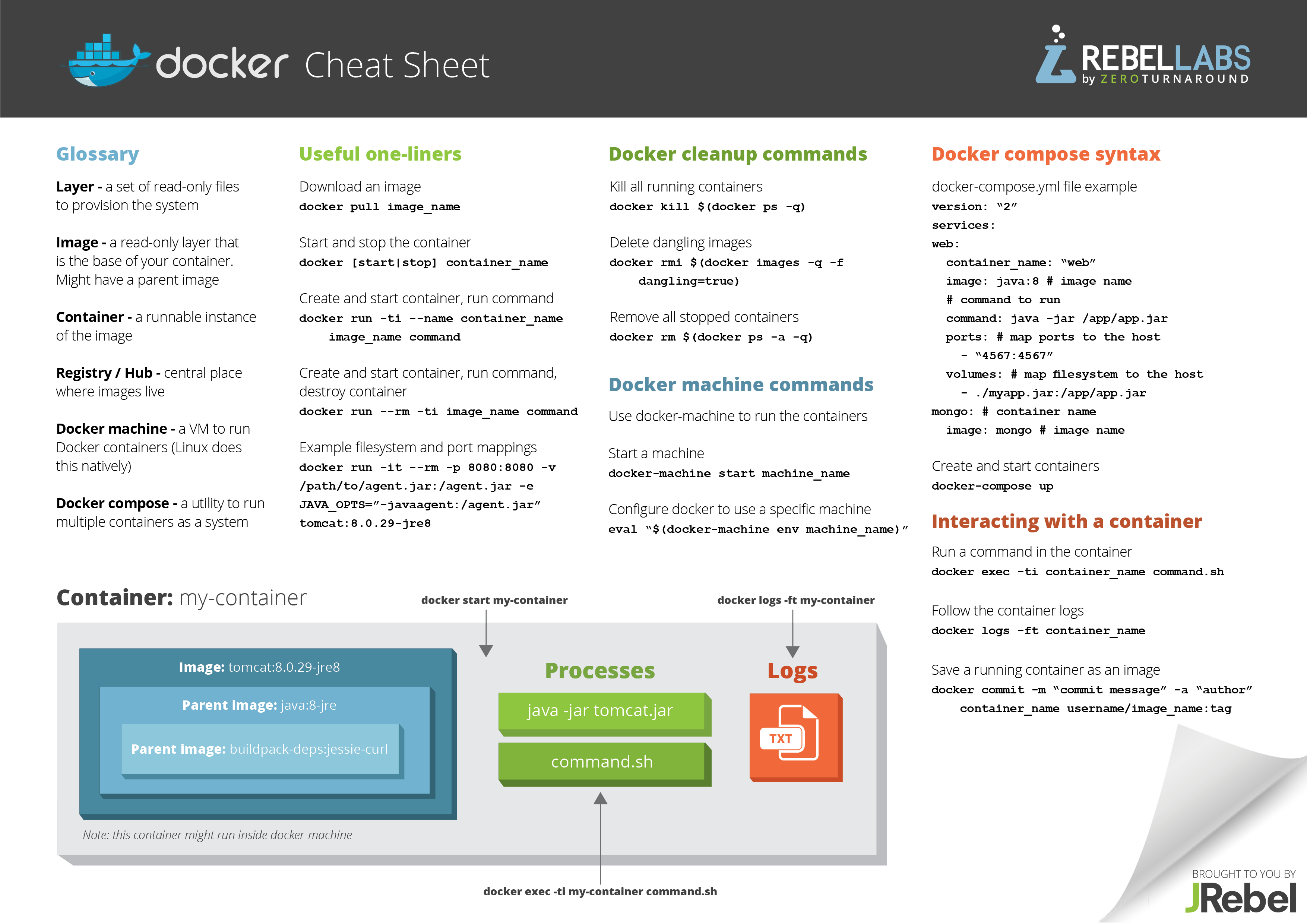Docker
Docker is one of the most popular container technology, which automates the deployment of applications by packaging an application with all of its dependencies into software containers. A good introduction to docker can be found here. Download the Docker engine here. The difference between docker containers and typical Virtual Machines (VMs):

Docker useful commands
Clone a docker container
docker pull <image>:latest. The taglatestis not required. Clone the container appropriate for your use case, for eg., usecentosfor the latest version of CentOS. CentOS and most other linux operating systems are available as official repositories from the Docker Hub.To use non-official docker images, you need to add the organisation before the docker image, for example to pull the latest version of
tensorflow:docker pull tensorflow/tensorflow:latest
Using a docker image
- The docker image can be used directly from the Docker Hub
- To launch the
centosdocker container, rundocker run -ti tensorflow/tensorflow:latest /bin/bash
Running a container with a local volume mounted
docker run -ti -v /home/<user>/<mounted-folder>/:/<path-in-container> cbgeo/cb-geo:latest
Connecting to a running container
docker exec -ti <containerid> /bin/bash
Start / stop a container
docker start <containerid>docker stop <containerid>
Delete a container
docker rm <containerid>, stop the container before deleting it.- To delete all docker containers
docker rm $(docker ps -a -q)
Exposing ports
- To connect to a particular port (for e.g., 3000) in docker container to port
3000in localhost:docker run -ti -p 3000:3000 tensorflow/tensorflow
To login as root
- Launching docker as root user:
docker exec -u 0 -ti <containerid> /bin/bash
Creating an image from a docker file
- To build an image from docker file run as root
docker build -t "tensorflow/tensorflow" /path/to/Dockerfile docker historywill show you the effect of each command has on the overall size of the file.
Docker cheat sheet
